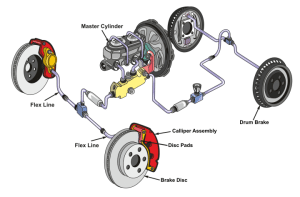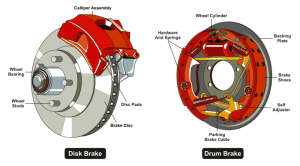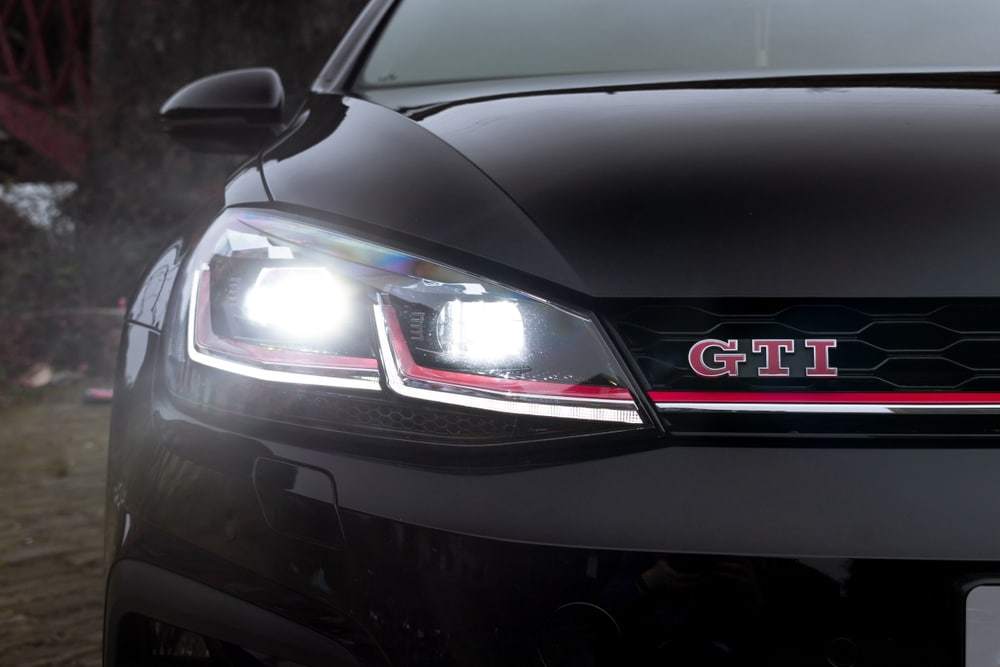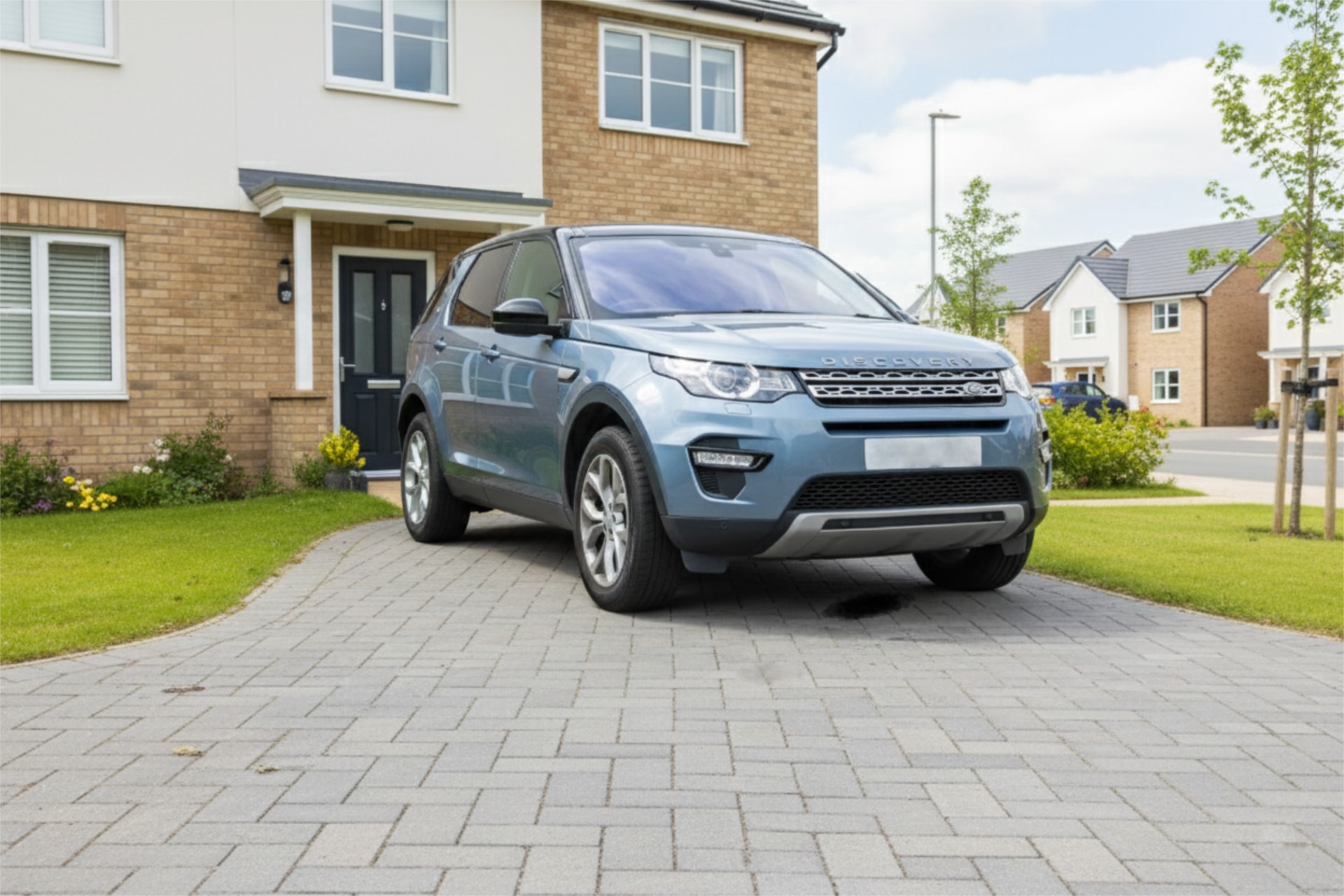Braking System
You might not think much about your car’s braking system. You press the pedal, and the car stops. Simple.
But in reality, it’s a precise and powerful network of components working together to bring your vehicle to a safe halt, every time.
Getting to know how your braking system functions doesn’t just make you a more informed driver. It also helps you appreciate how crucial it is for your safety on the road.
In this guide from Standish Service Station in Standish, we’ll explain how car brakes work, what takes place behind the pedal, and why regular checks are vital for maintaining performance and safety.
Braking System Mechanics – How It Brings You to a Safe Stop
Your car’s braking system is powerful enough to bring a fast-moving, heavy vehicle to a complete stop in seconds. That’s no small feat, and it all happens in the background, with just a press of your foot.
To fully understand why servicing matters, it helps to know what’s going on underneath. Let’s start with the basics.
The Simple Science Behind Stopping
When your car is in motion, it stores kinetic energy. The faster you go, the more of it builds up. Your braking system has one key job: to convert that energy into heat through friction.
There are various braking system types, but most modern passenger vehicles use a hydraulic system paired with either disc brakes, drum brakes, or a mix of both.
Here’s what happens:
- Pressing the brake pedal creates hydraulic pressure.
- That pressure travels through sealed brake lines to all four wheels.
- At each wheel, either brake pads clamp onto a rotating disc (disc brakes), or brake shoes press outwards against the inside of a drum (drum brakes).
- This contact creates friction, turning motion into heat and slowing the vehicle.

Modern cars also include Anti-lock Braking Systems (ABS). During sudden braking, ABS prevents the wheels from locking by rapidly adjusting brake pressure, helping you maintain control.
So what happens inside the system when you press the brake pedal? Let’s break it down…
What Takes Place After You Press the Brake Pedal
Every time you press your brake pedal, a complex chain reaction begins, one that delivers a smooth and controlled stop in just moments. Here’s how it all unfolds:
- The brake pedal is pressed
This initial action triggers the system. The force from your foot travels to the brake servo (also called the booster). - The servo boosts your input
The servo multiplies the force applied to the pedal. Without this assistance, you’d need much more leg power to stop the vehicle. - The master cylinder converts force to hydraulic pressure
The amplified force from the servo is sent to the master cylinder. This converts the mechanical input into hydraulic pressure using brake fluid. - Hydraulic pressure is sent through the brake lines
The fluid pressure moves through a sealed system of lines and hoses to all four wheels, keeping the response balanced and reliable. - The brakes engage at each wheel:
- In disc brake systems, the hydraulic pressure forces calliper pistons to press the brake pads against the disc. This generates the friction needed to slow the wheel.
- In drum brake systems, the pressure activates wheel cylinders that push the brake shoes outwards against the drum, creating the same effect.

- In disc brake systems, the hydraulic pressure forces calliper pistons to press the brake pads against the disc. This generates the friction needed to slow the wheel.
- The system resets when you release the pedal
As soon as you lift your foot, the pressure drops, the components disengage, and the car is ready to move freely again.
All of this happens in a split second, giving you the ability to adjust speed or stop altogether with just a small amount of effort.
At Standish Service Station, we know how critical this system is. That’s why we inspect the braking components during every service and flag any signs of wear before they escalate into serious issues.
Other Key Features of the Braking System
- Anti-lock Braking System (ABS)
ABS is designed to step in when you brake suddenly. If a wheel starts to lock, the system rapidly adjusts brake pressure to that wheel, maintaining traction and allowing you to keep steering control.
- Parking Brake
Also known as the handbrake, this component works independently of your main hydraulic system. In older models, it’s activated by a lever and cable; in newer vehicles, it may be electronic.
Regardless of the setup, the parking brake functions separately from the main braking system and is legally required to act on at least two wheels,making it a vital safety feature as well as a parking tool.
Trust Standish to Keep Your Braking System in Top Condition
You rely on your brakes every time you get behind the wheel, but it’s easy to overlook the signs that something’s not quite right. A bit of noise, a slight vibration… easy to ignore until it becomes a real problem.
At Standish Service Station, we take brake safety seriously and believe prevention is always better than repair. That’s why our technicians carry out a full brake inspection during your scheduled service. But if you notice anything unusual in between visits, no matter how minor, don’t wait. Catching issues early can save you money and help you avoid unnecessary risk.
Whether you need routine servicing or a more urgent check, our team is here to help. We’ll give you honest advice, explain any issues clearly, and carry out the work with care and precision.
We’re proud to have a {{average-rating}} star Google rating from {{review-count}} satisfied customers across Wigan, Bolton, and the surrounding areas. When you choose us, you can count on:
- High standards of workmanship backed by experience
- Transparent pricing with no unexpected costs
- Free courtesy car to keep you moving
- 12-month parts and labour guarantee on all work
- Advanced diagnostic tools for accurate assessment
- OEM-quality parts that match your vehicle’s original specification
If your brakes are due a check, or something doesn’t feel quite right, give us a call on 01257 422899.
Standish Service Station, Standish. We’re here to keep you safe.
Call Now 01257 422899Save on Brakes Servicing



